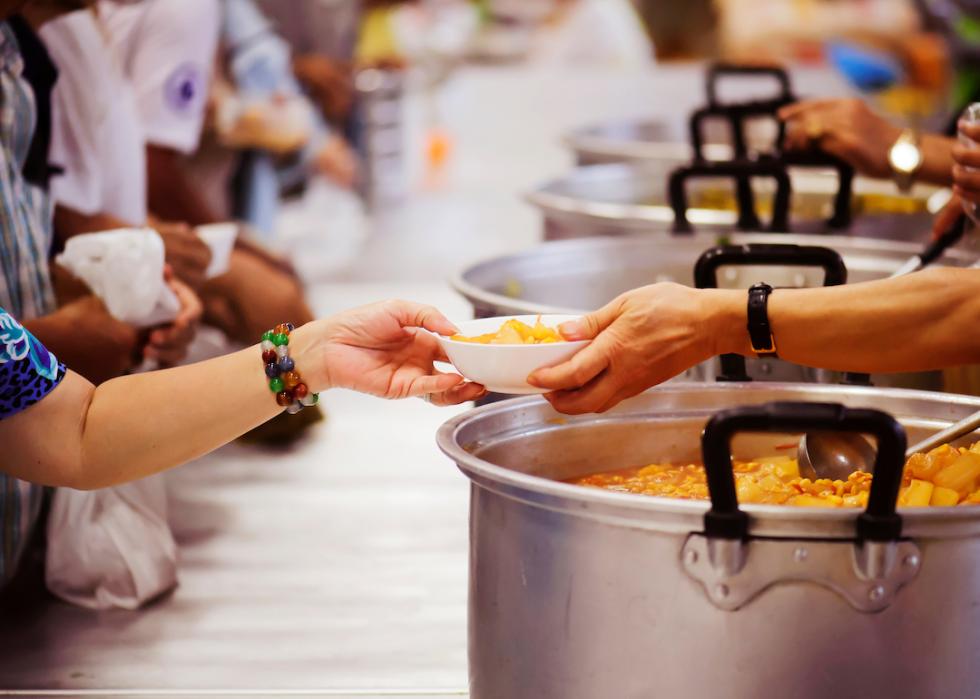
Most common settings for foodborne outbreaks in North Carolina
Most common settings for foodborne outbreaks in North Carolina
It seems there isn't a day that goes by without a headline about contaminated food resulting in a recall or outbreak. In mid-November 2024, the Food and Drug Administration began investigating an E. coli outbreak from organic carrots sold at popular grocery stores like Kroger, Wegmans, Sprouts, and Trader Joe's, affecting people in more than a third of U.S. states. Earlier in 2024, a listeria outbreak from Boar's Head deli meats resulted in the recall of 7 million pounds of meat, 61 reported illnesses across 19 states, and 10 deaths.
Annually, about 1 in 6 Americans contract a foodborne illness, according to the Centers for Disease Control and Prevention. Of those 48 million people who get sick each year, 128,000 end up in the hospital, and roughly 3,000 die. Foodborne illnesses are commonly spread through bacteria, viruses, and parasites consumed via contaminated food or drink. The primary culprits include norovirus, hepatitis A, salmonella, E. coli, and listeria, all of which can lead to flu-like symptoms, according to the FDA. But in some cases, the situation can be more severe.
Norovirus, often called the stomach flu or bug, is highly contagious and frequently spreads through raw or undercooked shellfish. Salmonella is usually found in raw poultry, eggs, and unpasteurized milk, and can sometimes lead to severe bloodstream infections. E. coli, notably linked to undercooked ground beef and leafy greens, can cause a potentially life-threatening complication known as hemolytic uremic syndrome. Though less common, listeria also poses serious risks, especially to pregnant women, older people, young children, and people who are immunocompromised; it tends to spread through deli meats, soft cheeses, and unpasteurized dairy products and can lead to miscarriages or neonatal infections in severe cases.
Certain types of food are more commonly associated with foodborne illness outbreaks. According to a Consumer Reports analysis of recalls and illness outbreaks from 2017 to 2022, leafy greens, poultry, deli meat, and cheese are among the most frequently linked foods. Fresh produce is especially vulnerable due to its potential exposure to contaminated soil or water, while eggs and dairy can harbor pathogens if improperly handled or stored.
Additionally, food prepared in bulk settings, like restaurants, cafeterias, and catered events, has been a regular source of outbreaks. For example, Chipotle was fined $25 million after food contaminated at its locations led to over 1,100 cases of foodborne illness between 2015 and 2018. Grocery stores, schools, and food processing plants have also been the root of significant outbreaks, underscoring the widespread risk of foodborne illness across diverse food-handling environments.
Curious to find out where these outbreaks are most often occurring near you? Stacker analyzed data from the CDC to identify the most common settings for foodborne outbreaks in North Carolina from 2010 to 2022. Read on to see where you should consider being extra cautious before you take a bite or sip.

#10. Festivals or fairs
- Illnesses reported: 44 (1.4%)
- Hospitalizations reported: 0 (0.0%)

#9. Farms
- Illnesses reported: 101 (3.1%)
- Hospitalizations reported: 18 (12.2%)

#8. Banquet facilities
- Illnesses reported: 29 (0.9%)
- Hospitalizations reported: 0 (0.0%)

#7. Grocery stores
- Illnesses reported: 185 (5.7%)
- Hospitalizations reported: 0 (0.0%)

#6. Schools or colleges
- Illnesses reported: 23 (0.7%)
- Hospitalizations reported: 0 (0.0%)

#5. Long-term care facilities
- Illnesses reported: 74 (2.3%)
- Hospitalizations reported: 0 (0.0%)

#4. Private homes
- Illnesses reported: 126 (3.9%)
- Hospitalizations reported: 29 (19.6%)

#3. Religious facilities
- Illnesses reported: 186 (5.7%)
- Hospitalizations reported: 7 (4.7%)

#2. Caterers
- Illnesses reported: 230 (7.1%)
- Hospitalizations reported: 0 (0.0%)

#1. Sit-down restaurants
- Illnesses reported: 853 (26.3%)
- Hospitalizations reported: 69 (46.6%)
This story features data reporting by Wade Zhou, writing by Cynthia Rebolledo, and is part of a series utilizing data automation across 50 states and Washington D.C.



